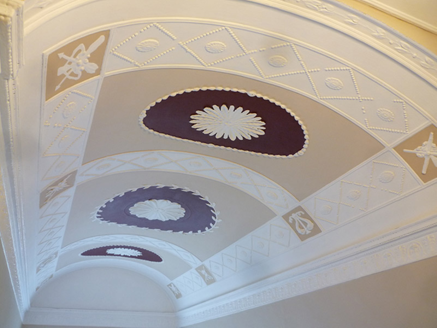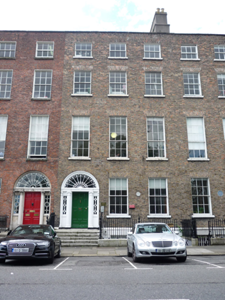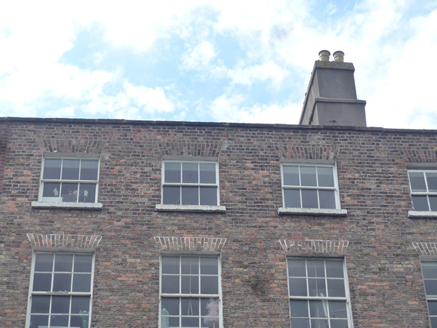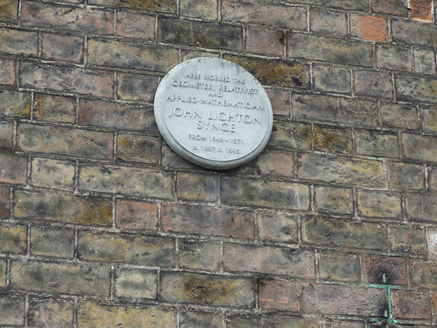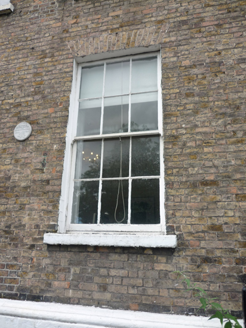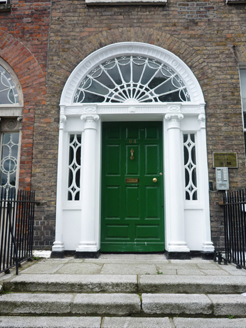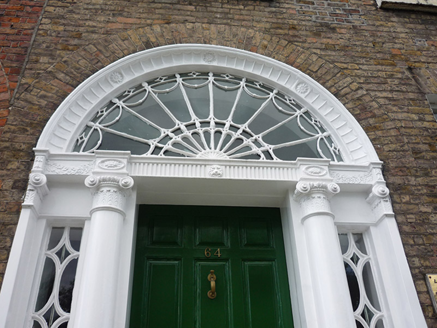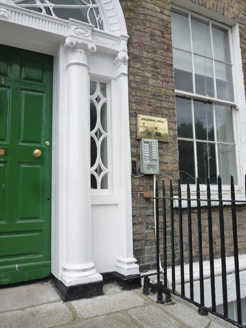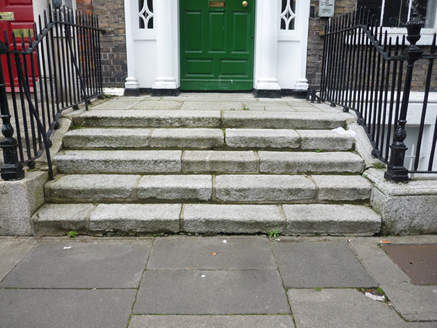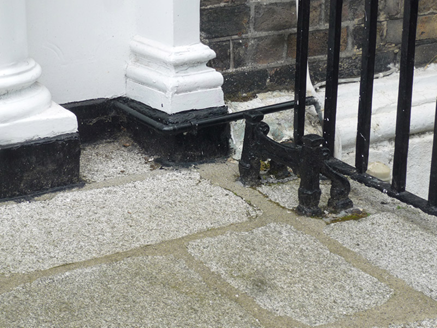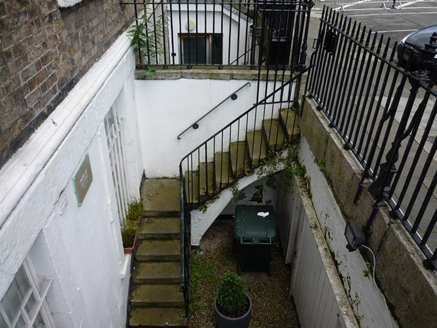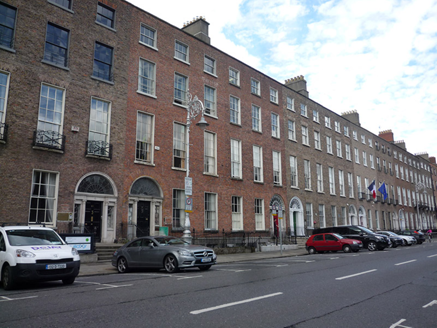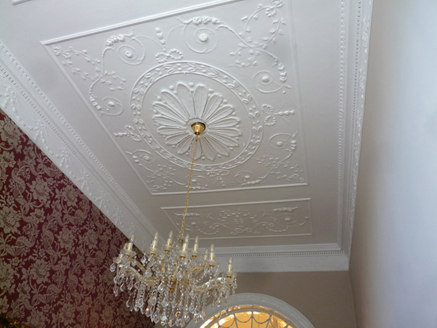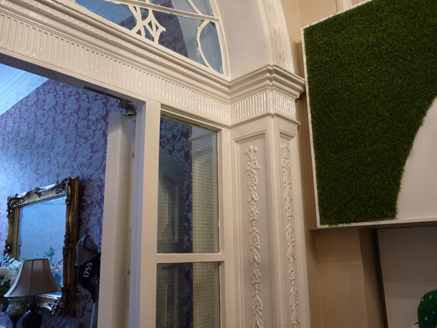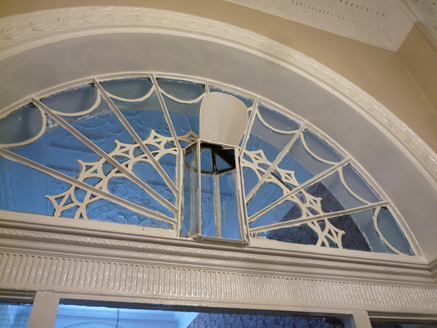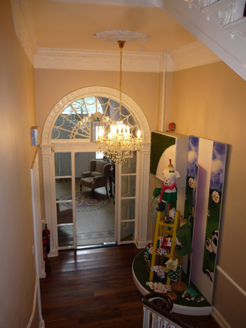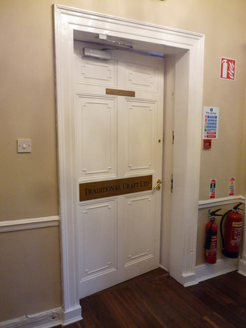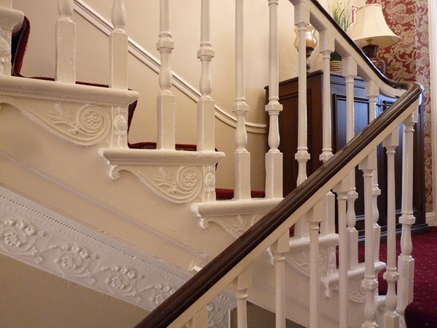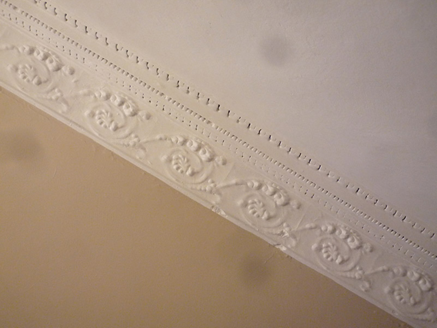Survey Data
Reg No
50100424
Rating
Regional
Categories of Special Interest
Architectural, Artistic, Historical
Previous Name
Dublin Institute for Advanced Studies
Original Use
House
In Use As
Office
Date
1785 - 1795
Coordinates
316663, 233442
Date Recorded
29/07/2016
Date Updated
--/--/--
Description
Attached three-bay four-storey former house over basement, built c. 1790 apparently as one in terrace of seventeen, having bow to two western bays of rear, and two-storey addition to third bay with lean-to extension section to south end. Now in use as offices. Pitched slate roof to front, hipped to east end, behind Flemish bond brown brick parapet with granite coping, and two hipped roofs to rear perpendicular to street, larger over bow. Shouldered rendered chimneystacks to east, shared with No. 65, with clay pots. Concealed rainwater goods. Flemish bond brown brick walls on moulded granite plinth over exposed stone walling to basement at front and rendered to rear. Square-headed window openings, diminishing in height to upper floors, with painted rendered reveals, soldier arches and painted granite sills; exposed granite block-and-start surrounds and wrought-iron grilles to basement; and round-headed stairs window to rear elevation of eastern bay. Timber sliding sash windows, nine-over-six pane to first floor, three-over-three pane to top floor and six-over-six pane elsewhere, to front and rear elevations. Round-headed principal doorway with paired Ionic columns flanking decorative geometric leaded sidelights, fluted frieze and cornice, ornate cobweb fanlight, cavetto-moulded architrave and eleven-panel timber door with brass furniture. Granite platform with cast-iron boot-scrapes and five granite steps. Wrought-iron railings enclosing basement area with decorative cast-iron posts on moulded granite plinth. Timber panelled door accesses basement interior below bridged platform. Entrance hall has mosaic tiled flooring and delicate neo-Classical plasterwork ceiling. Round-headed door opening with cobweb leaded fanlight and lantern box leads to stairs hall with neo-Classical-style barrel-vaulted ceiling and timber open-well staircase with paired timber balusters to each tread and carved timber handrail with gesso ornaments to tread ends. Generally timber panelled doors with moulded timber architraves, decorative cornices and ceilings roses to principal rooms, and with festooned chimneypiece to ground floor room. carparking to rear. Wall plaque reads 'Here worked the geometer, relativist and applied mathematician John Lighton Synge from 1948-1971 b.1897 d.1995.'
Appraisal
No. 64 Merrion Square is an elegant Georgian house that forms part of the eighteenth-century square developed by the Fitzwilliam Estate. this building is well-proportioned and makes a strong contribution to the early streetscape character of the square. Its relatively modest façade is enlivened by its fine Ionic doorcase with an elaborate leaded fanlight and sidelights. The railings also provide visual and craft interest. Its interior plasterwork and joinery are significant and give it added architectural and artistic interest. From 1940, No. 64 (and its neighbour, No. 65) was used as the headquarters of the Institute for Advanced Studies. A wall plaque records that John Lighton Synge (1897-1995), mathematician and physicist, worked here between 1948 and 1971, serving as Senior Professor in the School of Theoretical Physics. The building and its intact setting contribute significantly to the intact appearance of this important architectural set-piece. The square is one of the best-preserved Georgian streetscapes in Ireland. The north, east and south sides are lined with terraced houses of eighteenth and early nineteenth-century date, while the west side is terminated by the garden front of Leinster House and the flanking Natural History Museum and National Gallery. The houses maintain a relatively uniform building height and design, attributed to standards promoted in Fitzwilliam's leases. Individuality was introduced through the design of doorcases, window ironwork and interior decorative schemes. The south side of Merrion Square was initially set in large plots of twelve leases; plots were leased consecutively from east to west until the row was complete in 1791.
